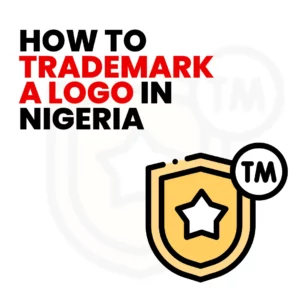Ranking your content in SERPs is always necessary to target a maximum number of readers or clients. However, in the scenario when there are millions of content pieces already thriving on the internet elevating your content can be a difficult task. But, don’t worry; in this comprehensive article, we’ll cover pro tips to boost your content with smart SEO techniques.
SEO: A Brief Explanation
SEO refers to the process of ranking websites in the SERPs. In the context of content, SEO involves the acts of incorporating various search engine-friendly things/elements in the content to make it rank higher in the search engines when the relevant terms or phrases or searched on the internet.
Unlike paid promotion or advertising, implementing SEO techniques impart a long-lasting effect on the elevation/ranking of the content. So, it’s a wise strategy to pay attention to the SEO techniques.
5 Smart SEO Techniques to Elevate Your Content
1. Proper Keywords Research

Keywords are the terms or phrases that people use to reach what they are looking for. These are also known as “search queries”.
For example, if you are looking to purchase new jogging shoes, you might write something like “best Jogging shoes for men” in the search bar of Google. That phrase you used is the keyword.
Smart Tips to Keyword Research
- You should find out those keywords that have low difficulty. Mostly short tail keywords are harder to rank for than long tail ones. So, try to research longer keywords with higher search volume.
- Once you picked a primary keyword for your content, you should make a list of LSI keywords as well. LSI keywords are effective at boosting the relevance of your content and avoiding keyword stuffing.
- While picking the keywords you should ensure that their intent aligns with your brand or business.
Smart Tips to Add Keyword
- Add the focus keyword in the Title, Main Headings, and at the beginning of content like Introduction or under the first heading.
- Don’t do keyword stuffing but maintain the keyword density at 1-2%.
- You should spread the LSI keywords throughout the content. But, make sure that all the keywords are added naturally and fit best according to the context of the content.
And so on…
Practical Example:
Focus Keywords: “The Best Mobile phone”
LSI Keywords: The Best Smartphones, Top Phones, The Best Phone Brand, Perfect Mobile Phones, etc.
2. Optimize Title And Meta Description

Optimizing Title:
The title tag is the very first thing that meets the eyes of readers. It is the line that lets your audience know what sort of content is covered by you. Optimizing the title can play a big role in elevating your content.
Expert Tips to Optimize Titles
- Add Main Keyword: You should add the Focus/main keyword of your content into the title. This is useful to show the relevancy of your content with the search queries.
- Optimize Length: The title should not exceed the optimal characters limit. You should limit it to between 50 to 60 characters.
- Use Power Words: You can make the title attention-grabbing or engaging by adding Power or Compelling words such as Best, Effective, Powerful, Top, etc. And your content CTR will ultimately increase.
Practical Example:
Title: “Cracking the Code: How to Find the Perfect Mobile Phone.”
(55 Characters)
Optimizing Meta-description:
Meta-description or meta-tags is a paragraph of limited characters that is shown under the title tag of your content.
Expert Tips to Optimize Meta-Tags
- Focus Keyword: Include the Focus keyword at least once in the meta-description.
- Optimal Length: Limit the length of meta-tags between 155 to 160 characters.
- Descriptive: Make it descriptive to be easily comprehensible.
- Main Idea: It needs to convey the primary idea of your writing.
For Example:
The meta description of this post is below:
Meta-Description:
“Elevate your content in SERPs with pro tips on smart SEO techniques. Know about the easy strategies including KW Research, Optimal Title and Meta-tags, etc.”
(156 Characters)
3. Create Plagiarism Free Content

Plagiarism is an illegal act that is strongly condemned by every search engine. If you publish content with plagiarism, there will be no possibility of its elevation in any way. Moreover, it will negatively affect the overall credibility and authority of the content.
That’s why it is necessary to check your content for plagiarism before finalizing it. And if there’s any copied or accidental plagiarism, you’ll be able to take the necessary steps.
Today, checking content for plagiarism is a very easy task. There are several online Plagiarism checking tools that you can utilize for this purpose. An online plagiarism checker matches the given content with already published material on the internet and points out matched/plagiarized text pieces.
4. Add Visuals

Making your content engaging can be for SEO, and adding images, illustrations, videos or other visuals is a good way to get started.
Smart Tips to Add Visuals
- Original: You should add only original or copyright-free visuals. Otherwise, search engines can penalize your content or site which ultimately leads to its de-ranking. Multiple sites on the internet provide royalty-free images such as Unspalsh, Pexel, Pixabay, etc.
- Optimal Size: You should add visuals of optimal size that are quick to load. For images, the ideal size is between 70Kb to 100Kb and for videos it should be 500KB.
- Alt Tags: You should add alt-tags for every image since this will help search engines know what the images are for.
5. Do Internal Linking

Internal linking is the process of adding hyperlinks that lead to other content or pages of the same site. It is a useful strategy to elevate your content. It better the content SEO in the following ways:
- It builds a contextual relationship between the different content pieces of your site.
- Internal linking assists search engines in easily navigating and indexing your content.
- By internal linking, you can pass the link juice of one content or post to another.
Smart Tips to Do Internal Linking
- Relevancy: Always link the content with relevant posts.
- Anchor Text: Your anchor text should be Keyword-rich.
- Authority: Link high authority pages to the content which you want to elevate in SERPs.
- Limited Number: Don’t stuff your content with a lot of internal linking. But, you should limit the frequency of internal links to around five to six per content.
Conclusion
These days most people are utilizing SEO techniques to make their content SE-friendly and ultimately make them rank. This is because of the higher concentration of competitors on the internet. In this scenario, you should not rely on just writing and publishing your content. But, it is essential to pay attention to SEO tips and tricks.
So, before finalizing any content you should make a checklist of SEO techniques for them and apply them throughout the content. For this, the above-mentioned “Pro Tips for Smart SEO Techniques” will prove helpful.




